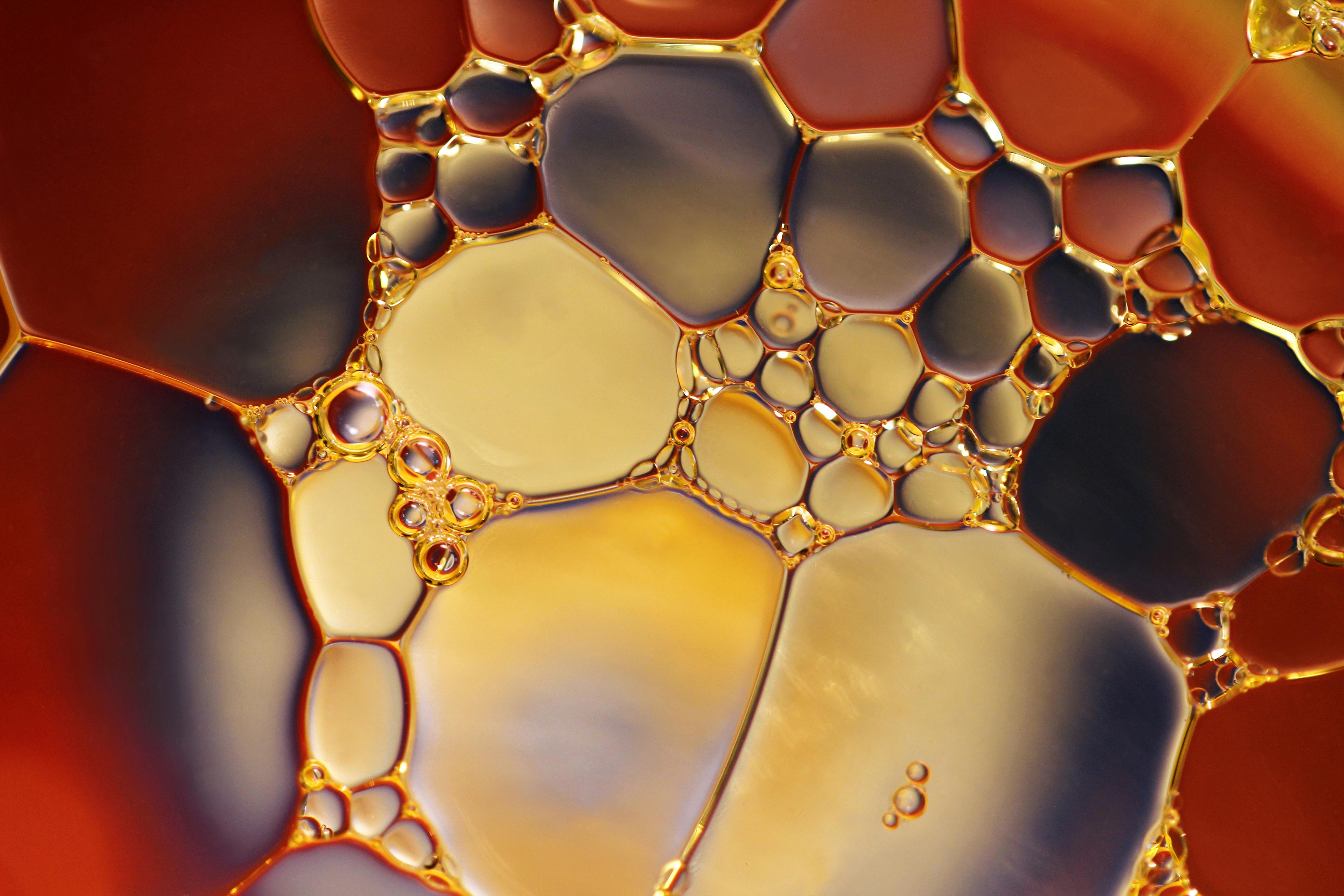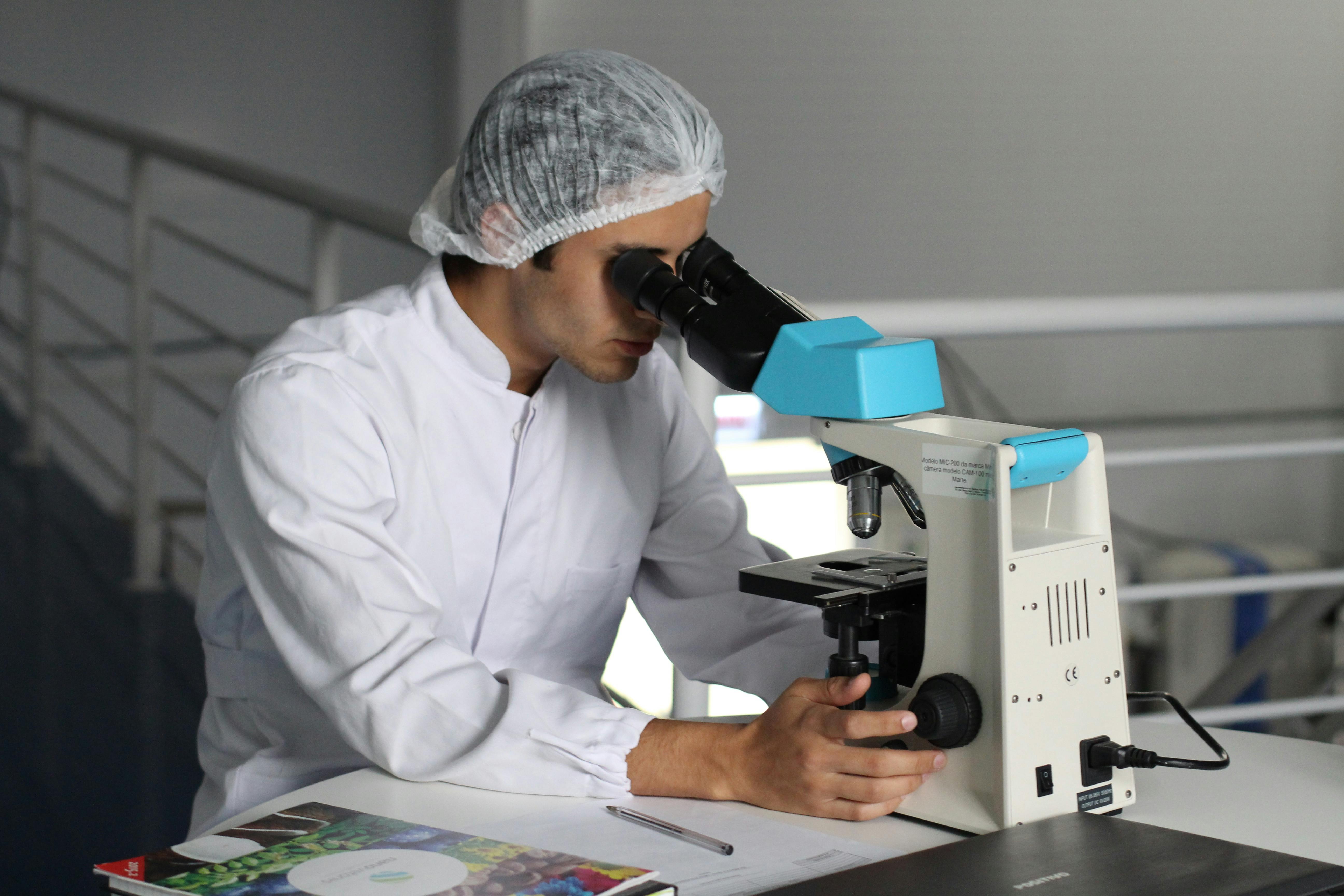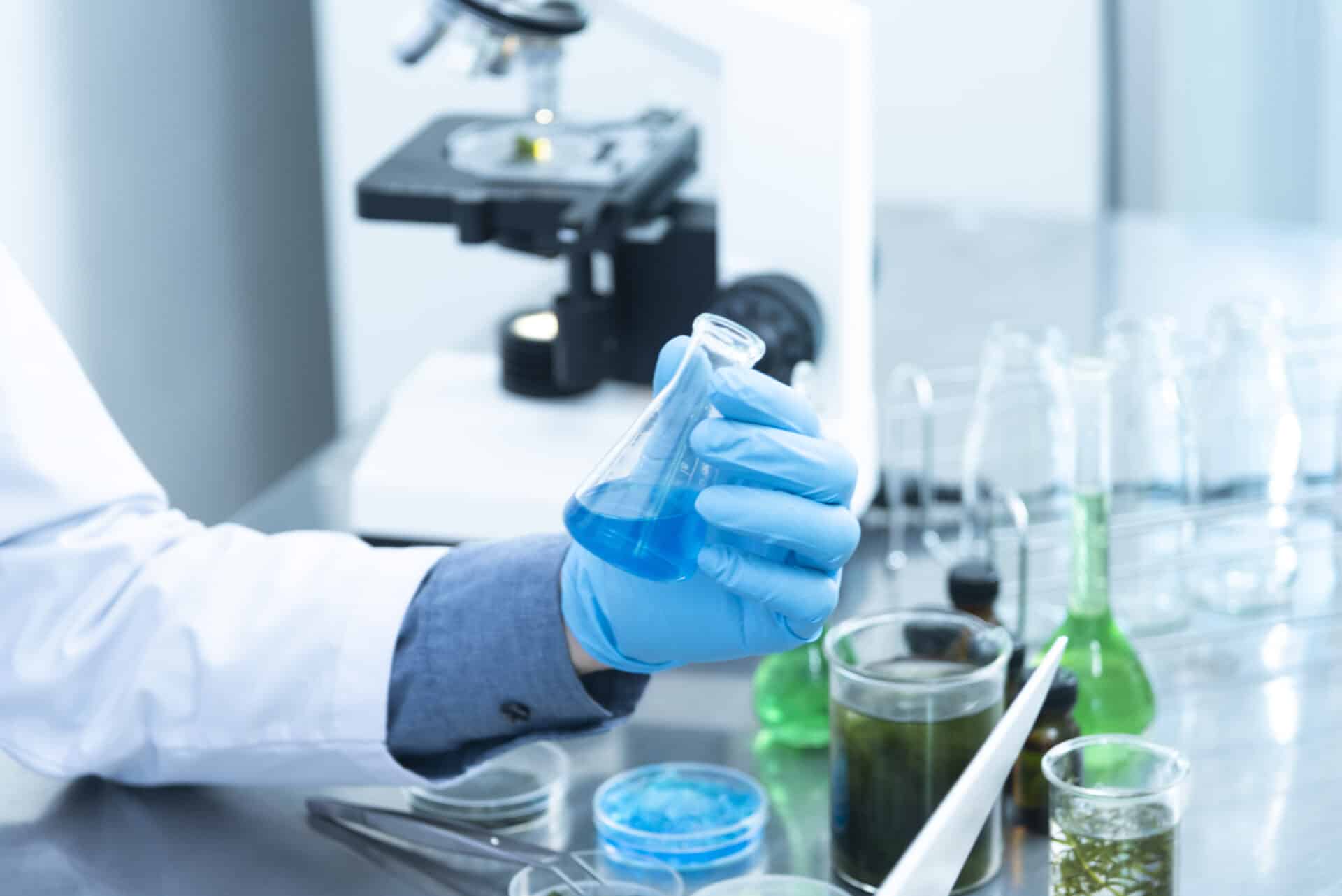Distillation in chemistry is a process used to purify liquids by separating them into their component parts, or fractions, based on the differences in their boiling points. It is a physical separation method that uses heat to separate a liquid or mixture of liquids into its component parts. Distillation can be used to purify a single liquid or to separate mixtures of liquids. In addition, distillation can be used to separate solids from liquids, as well as volatile liquids from non-volatile liquids. Distillation is one of the oldest methods of purifying liquid mixtures and has been used for centuries in the production of many products such as alcohol, perfumes and essential oils.Distillation in chemistry is a process of separating the components of a liquid mixture by heating the mixture and condensing the vapor to form a pure component. It is used to purify liquids, separate mixtures and concentrate solutions. Distillation works by taking advantage of differences in boiling points. The component with the lower boiling point vaporizes first and can be collected separately from the rest of the mixture.
Distillation
Distillation is a process in which a liquid or vapour mixture of two or more substances is separated into its component parts, known as fractions. It is an important industrial process for separating and purifying components of a mixture. Distillation relies on the different boiling points of each component to separate them from one another. In the distillation process, a heated mixture is vaporized and then condensed, allowing each component to be collected separately. The most commonly used form of distillation is simple distillation, in which a liquid mixture is heated until its components vaporize at different temperatures and then condensed back into liquid form. Other forms of distillation include fractional distillation, azeotropic distillation, steam distillation, vacuum distillation, and molecular distillation. Each type of distillation has its own unique set of benefits and drawbacks that should be taken into account when selecting the best method for a particular application.
Distillates are often used to produce alcoholic beverages such as whiskey and vodka. Distillate can also be used to create essential oils and fuel oils. Distillates may also be used in the production of certain drugs or medicines to isolate active ingredients from other compounds in the mixture.
Types of Distillation Methods
Distillation is a process used to separate a mixture of liquids into their individual components. This is done by boiling the mixture and then condensing the vapors that come off. The condensation separates the liquid from its impurities, allowing it to be collected in its purest form. There are several different types of distillation methods used for this process, each with its own advantages and disadvantages.
The most common type of distillation is called simple distillation. In this process, a mixture is boiled and the vapors that come off are condensed into a separate container. This method can be used to separate two liquids with different boiling points, such as water and alcohol. It is also often used in laboratories to purify solvents or other chemicals.
Another type of distillation is called fractional distillation. This method uses a more complex setup with multiple trays or plates that allow for more efficient separation between liquids with similar boiling points. This method is often used in oil refineries to separate crude oil into usable fuels like gasoline and diesel fuel.
A third type of distillation is known as steam distillation. In this method, the mixture is boiled and steam is passed through it instead of air or other gases, which causes the liquid to evaporate more quickly and efficiently than simple distillation does. Steam distillation can be used to extract essential oils from plants or herbs, as well as for extracting water from wastewater for reuse or disposal purposes.
Finally, vacuum distillation may be used when dealing with substances such as acids or solvents that have very high boiling points or would be dangerous at normal atmospheric pressure conditions. By reducing the pressure on these substances, they can be vaporized at much lower temperatures than normal which makes them easier to collect in their purest form without having to rely on higher temperatures which could damage them further.
No matter what type of distillation process you need to use, it’s important that you understand how each one works so you can choose the right one for your application. Understanding the different types of distillation methods will help you achieve better results and ensure that your product remains safe and pure throughout the entire process.
Purpose of Distillation
Distillation is a process of separating the components or substances from a liquid mixture by using selective boiling and condensation. It is an effective method to purify liquids, separate mixtures, and create concentrated solutions. Distillation is used in various industries such as oil refining, chemical processing, water treatment, beer and spirits production, food preparation and more. The primary purpose of distillation is to separate the substances present in a liquid mixture according to their different boiling points. This allows for the removal of impurities that would otherwise remain in the final product. In addition, distillation can also be used to concentrate certain components in the mixture such as alcohols or other solvents. By removing unwanted compounds from a liquid solution, distillation helps ensure that the end product is safe for consumption or use in other applications.
In addition to its use in industrial processes, distillation is also used in home brewing and winemaking. By using a still or other distilling apparatus, home brewers can produce high-quality beer and wine with little effort. The process involves heating up the liquid mixture until it reaches its boiling point and then capturing the vapors that are produced. As these vapors cool down, they become liquid again and can be collected separately from the original mixture. This allows for careful control over what components are included in the final product which helps ensure that it meets quality standards.
Applications of Distillation in Chemistry
Distillation is a process used to separate the components of a liquid mixture based on differences in their boiling points. It is a commonly used technique in chemistry, as it allows chemists to purify compounds and separate them from impurities. Distillation also allows chemists to isolate compounds with different boiling points, making it an essential part of many chemical processes.
One of the most common applications of distillation in chemistry is the purification of liquids. This can be done by carefully controlling the temperature and allowing the liquid mixture to vaporize, leaving behind any impurities that may be present in the mixture. This can be done on a variety of different liquids, including solvents, acids, basic solutions, and organic compounds.
Another application of distillation is fractional distillation, which allows chemists to separate compounds based on their boiling points. In fractional distillation, a fractionating column is used to allow for more accurate control over the temperature at which each compound boils off. This allows for more precise separation and isolation of each compound from the mixture. Fractional distillation can be used to separate complex mixtures into their individual components, allowing for further analysis or use of those components.
The concentration of volatile compounds can also be increased through the use of distillation. By increasing the temperature at which a compound boils off, more volatile molecules will evaporate from the mixture than molecules with higher boiling points. This allows chemists to concentrate volatile compounds into smaller amounts while leaving behind unwanted molecules with higher boiling points. This process is often used when dealing with volatile organic compounds that are difficult to isolate or store due to their tendency to evaporate quickly at room temperature.
Distillation has many uses in chemistry and is an invaluable tool for chemists looking to purify liquids or isolate specific compounds from complex mixtures. Through careful control over temperature and pressure, chemists are able to accurately separate compounds by their boiling points and concentrate volatile compounds into smaller amounts for further analysis or use.

Advantages of Distillation
Distillation is a process used to separate components of a liquid mixture, such as a solution, by boiling and condensing the vapors produced. It is an effective way to separate mixtures as it can be used to produce pure liquids from a wide range of mixtures. There are several advantages associated with distillation which make it an attractive option for many different applications. These advantages include: high efficiency, cost-effectiveness, easy to control and operate, minimal waste and environmental impacts, and scalability.
The high efficiency of distillation means that it can be used in a wide range of applications where the components need to be separated with precision. It can also be used in sensitive processes where there is a need for accurate results. The cost-effectiveness of distillation makes it attractive for many industrial processes as it can be carried out with minimal cost compared to other separation processes.
The process is relatively easy to control and operate compared to other separation processes. This makes it attractive for industrial use as it can be easily monitored and adjusted when needed. Furthermore, the process produces minimal waste and has minimal environmental impacts compared to other methods which makes it more appealing for use in sensitive locations or areas where environmental protection regulations are in place.
Finally, distillation is easily scalable which means that the process can be adjusted according to the needs of each particular application or situation. This makes it possible to use the same equipment in multiple applications by simply adjusting the parameters such as temperature or pressure depending on what needs to be done.
Disadvantages of Distillation
Despite its numerous advantages, there are also some disadvantages associated with distillation which should be considered before using this process in any particular application. These include: low selectivity, expensive equipment required, energy intensive process, slow process time, and potential safety hazards due to flammable vapors produced during operation.
The low selectivity means that the components have similar boiling points making them difficult to separate using this method alone without additional steps such as fractional distillation or other purification techniques being employed first. The equipment required for distillation is quite expensive compared to other separation methods which may make this method impractical for some applications where lower costs are important considerations.
Distillation is an energy intensive process since large amounts of heat are required during operation making this method more costly than some other separation processes from an energy consumption point of view. Furthermore, the process time involved in distillation may be too slow for some applications due potential issues with clogging or fouling if too much material is processed at one time leading potentially lead production delays down the line if not taken into account properly beforehand.
Finally, care must be taken when operating any type of distilling equipment due potential safety hazards involved with flammable vapors produced during operation as well as hot surfaces which could lead burns if not handled correctly
Preparation for Distillation Process
Distillation is a process used to separate components of a liquid mixture based on the difference in their boiling points. Preparation for distillation is an important part of the process to ensure that the desired product is obtained. It requires careful planning and attention to detail in order to get the best results. Preparation includes setting up the equipment, selecting the proper materials, and determining the optimal distillation parameters.
The first step in preparation for distillation is to set up the equipment. This includes assembling all of the necessary components such as condensers, receivers, and heat sources. It is also important to ensure that all of these components are properly fitted and sealed before starting the process. In addition, it is important to select materials that are compatible with each other so that they will not react with each other during distillation.
Once all of the equipment has been set up, it is important to determine what type of distillation will be used. Different types of distillations have different parameters that must be followed in order to get optimal results. These parameters include temperature, pressure, and time. It is also important to monitor these parameters throughout the entire process as any changes can affect the final product significantly.
Finally, it is important to ensure that all safety protocols are in place before starting a distillation process. This includes making sure that any flammable or hazardous materials are kept away from heat sources and that all personnel involved have proper safety training and appropriate protective gear. Following these steps will help ensure a successful distillation process and a high-quality end product.
Step 1: Heating the Mixture
The first step in the distillation process is to heat the mixture to its boiling point. This is typically done using a heating element or a flame. The temperature of the mixture must be carefully monitored to ensure that it does not exceed its boiling point, as this could lead to a loss of valuable components of the mixture. After the mixture reaches its boiling point, it is ready for the next step in the process.
Step 2: Separation of Components
The second step in the distillation process is to separate the various components of the mixture. This is typically done by passing steam through it, which causes different parts of it to evaporate at different rates. The vaporized components can then be collected and cooled, allowing them to be separated out from each other.
Step 3: Condensation
The third step in distillation is condensation. In this process, the vaporized components are cooled down and condensed back into liquid form. This allows them to be collected and stored for later use or further processing. Condensation must be carefully monitored, as too much cooling can cause some components of the mixture to become solidified, which would make them unusable for further processing.
Step 4: Collection and Storage
Finally, once all of the components have been separated and condensed, they can be collected and stored for later use or further processing. It is important that they are stored properly in order to ensure that they do not degrade over time or contaminate other materials with which they might come into contact.

Conclusion
Distillation is an important process in chemistry, used to purify and separate compounds. It works by taking advantage of the different boiling points of different substances. By heating a mixture, the liquid with the lowest boiling point will vaporize first, and can be collected separately from the other components in the mixture. Distillation is used for a variety of applications, from producing drinking water to creating fuel for cars. With its versatile nature, distillation is an essential tool for chemists in any field.
Distillation is an essential tool for any chemist working with aqueous mixtures or volatile compounds. Its ability to separate and purify components makes it invaluable in fields ranging from oil refining to medical research. With careful application and advanced technology, distillation has become a cornerstone of modern chemistry.

